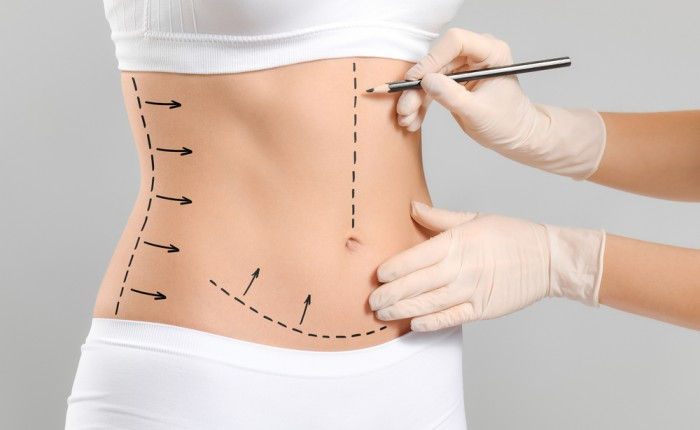Breast Implant Ruptures: What to Do if It Happens
- sadaf khan sudozai
- Mar 27
- 5 min read
Breast augmentation is a popular cosmetic procedure that enhances the shape and size of the breasts. While breast implants are designed to be durable, they are not lifetime devices and may rupture over time. If you have undergone Breast Augmentation in Islamabad, understanding the signs of an implant rupture and knowing how to respond can help you maintain your health and aesthetic results. This article provides detailed information on the causes, symptoms, diagnosis, and treatment of breast implant ruptures.

What is a Breast Implant Rupture?
A breast implant rupture occurs when the outer shell of the implant develops a tear or hole, causing the implant material to leak into the surrounding tissue. This can happen due to various factors, including aging of the implant, physical trauma, or complications from a previous surgery.
There are two main types of implant ruptures:
Saline Implant Rupture – The sterile saltwater inside the implant leaks out, leading to a noticeable deflation.
Silicone Implant Rupture – The silicone gel leaks slowly and may not show immediate signs, often referred to as a “silent rupture.”
Regardless of the type of implant, a rupture requires medical attention to prevent further complications.
Common Causes of Breast Implant Ruptures
While implants are designed to withstand pressure and movement, certain factors can increase the risk of rupture:
1. Aging and Wear & Tear
Breast implants are not permanent and tend to weaken over time. Most implants last between 10-15 years before the risk of rupture increases.
2. Trauma or Injury
A direct impact to the chest, such as in a car accident or during high-impact sports, can damage the implant and cause a rupture.
3. Surgical Complications
Improper placement, excessive handling during surgery, or using outdated surgical techniques can weaken the implant shell, making it more susceptible to rupture.
4. Capsular Contracture
Capsular contracture occurs when scar tissue forms tightly around the implant, putting pressure on it and increasing the risk of rupture.
5. Implant Deflation Due to Mammograms
High-pressure mammograms can sometimes cause small leaks or ruptures in breast implants, particularly if they are already aging.
6. Manufacturing Defects
Although rare, some implants may have defects from production, leading to premature rupture.
Symptoms of a Ruptured Breast Implant
The signs of a ruptured implant vary depending on whether you have saline or silicone implants.
Signs of a Saline Implant Rupture
Sudden loss of breast volume
Noticeable deflation of the affected breast
Wrinkling or rippling of the breast skin
No significant health risks since the saline solution is absorbed by the body
Signs of a Silicone Implant Rupture (Silent Rupture)
Gradual change in breast shape or size
Hardening or lump formation around the breast
Persistent pain or discomfort
Swelling or inflammation
Changes in nipple or breast sensation
Since silicone implant ruptures are often silent, it is recommended to get regular check-ups and imaging tests like MRI or ultrasound to detect any leaks.
What to Do if Your Breast Implant Ruptures
If you suspect that your breast implant has ruptured, follow these steps to ensure your health and safety:
1. Stay Calm and Assess the Situation
A rupture is not usually an emergency, but it does require medical evaluation. Take note of any visible changes in your breasts and whether you are experiencing discomfort.
2. Schedule an Appointment with Your Surgeon
Consult a board-certified plastic surgeon as soon as possible. They will conduct a physical examination and may order imaging tests to confirm the rupture.
3. Undergo Diagnostic Tests
Your doctor may recommend the following tests:
Ultrasound – Can detect changes in implant shape or fluid leakage.
MRI Scan – The most effective method for identifying silent ruptures in silicone implants.
Mammogram – Occasionally used, but not always recommended due to the risk of implant compression.
4. Consider Your Treatment Options
Once the rupture is confirmed, your surgeon will discuss the best course of action, which typically includes:
A. Implant Removal
If the implant has ruptured, it will need to be removed to prevent further complications.
B. Implant Replacement
Many patients choose to replace their ruptured implant with a new one to maintain their breast shape and size. Some may also opt for a different type or size of implant.
C. Fat Transfer Breast Augmentation
If you do not want another implant, you may consider fat transfer breast augmentation, where fat from another part of your body is injected into the breasts for a natural enhancement.
Preventing Breast Implant Ruptures
Although implant ruptures can happen, there are steps you can take to minimize the risk:
1. Choose High-Quality Implants
Modern implants are designed to be more durable. Gummy bear implants, for example, have a cohesive gel that minimizes leakage even if ruptured.
2. Follow Post-Surgery Care Guidelines
Proper aftercare can prevent complications that could lead to implant damage. Follow your surgeon’s recommendations regarding physical activity, bra support, and sleeping positions.
3. Get Regular Breast Checkups
Schedule regular follow-up appointments with your surgeon to ensure your implants are in good condition. Women with silicone implants should get an MRI every few years to detect silent ruptures.
4. Avoid Excessive Pressure on Your Implants
Be cautious during physical activities, including contact sports, heavy lifting, or direct impact to the chest area.
5. Consider Replacing Older Implants
If your implants are over 10-15 years old, talk to your surgeon about whether replacement or removal is necessary.
FAQs About Breast Implant Ruptures
1. Is a ruptured breast implant dangerous?
A saline implant rupture is not harmful since the body absorbs the saline solution. However, a silicone implant rupture may cause complications, requiring prompt medical attention.
2. How can I tell if my silicone implant has ruptured?
A silent rupture may not show immediate symptoms. MRI or ultrasound imaging is the best way to detect it.
3. Can breast implant ruptures be fixed without surgery?
No, a ruptured implant must be removed and, if desired, replaced with a new implant.
4. Does insurance cover implant rupture repair?
Some insurance plans may cover the cost of implant removal if it is medically necessary, but not for cosmetic replacement.
5. How long do breast implants last before they rupture?
Most implants last 10-15 years, but some can last longer with proper care.
Conclusion
Breast implant ruptures, though rare, are a possibility that every patient should be aware of. Recognizing the symptoms and seeking prompt medical advice can help prevent complications and ensure a smooth recovery. If you experience any changes in your breast shape, discomfort, or suspect an implant rupture, consult an expert surgeon immediately. For professional guidance and top-quality breast augmentation services, visit Dynamic Clinic to explore your options and maintain your aesthetic results.





Comments